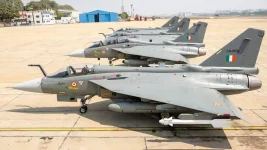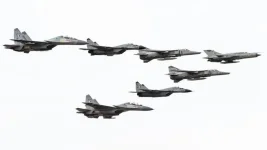
The Indian Air Force (IAF) is taking decisive steps to retire its aging fleet of Mikoyan-Gurevich MiG-21 fighter jets. In a recent move, the No. 23 Squadron, known as the “Panthers,” has been relocated from its base in Suratgarh, Rajasthan, to Nal airbase near Bikaner. This consolidation brings all remaining operational MiG-21 Bisons, the final variant of this single-engine fighter, under one roof.
This strategic move aims to streamline maintenance, service, and spare parts logistics for the remaining MiG-21s. While the IAF plans to phase out these iconic aircraft in the near future, it's crucial to maintain their operational readiness until their replacements, the indigenously developed Tejas Mk-1A light combat aircraft (LCA), are fully operational.
The Tejas Mk-1A program has faced some delays, with the first delivery to the IAF expected in July 2024. However, the state-run aircraft manufacturer, Hindustan Aeronautics Limited (HAL), is ramping up production to fulfill the order of 83 aircraft by 2028.
The MiG-21, inducted into the IAF in 1963, has served as the backbone of India's air defense for over six decades. Throughout its operational history, it has participated in various conflicts and played a pivotal role in safeguarding the nation's airspace. However, the aircraft has also been marred by a high accident rate, earning it the unfortunate nicknames of "Flying Coffin" and "Widow Maker."
Despite the controversies, the MiG-21's retirement signifies a turning point for the IAF as it embraces a new generation of fighter aircraft. The Tejas Mk-1A, with its advanced features and capabilities, is poised to become a cornerstone of India's air power in the coming years.



